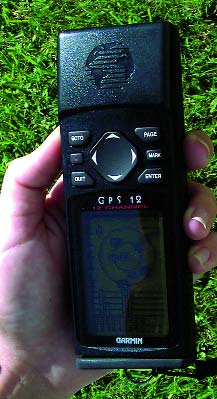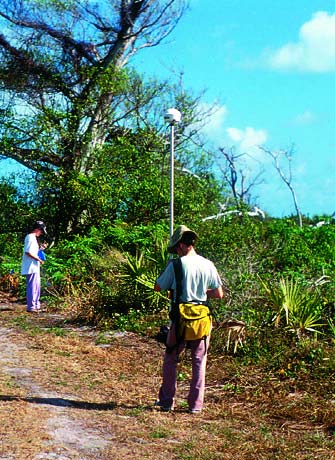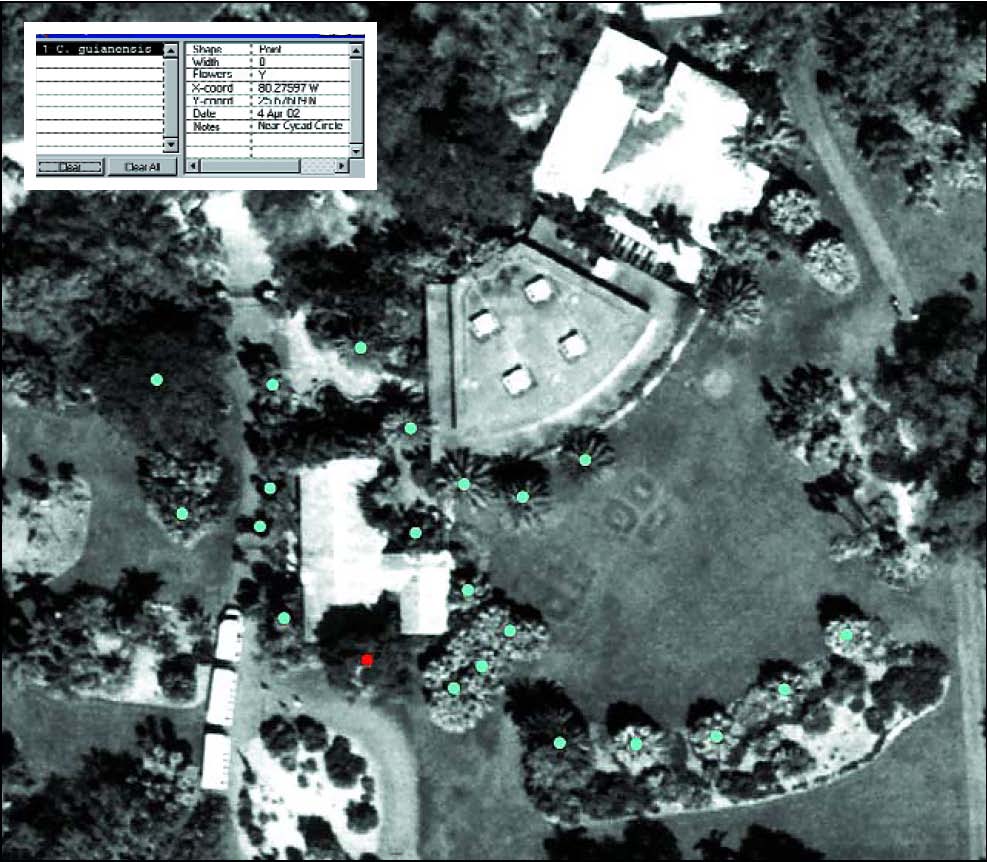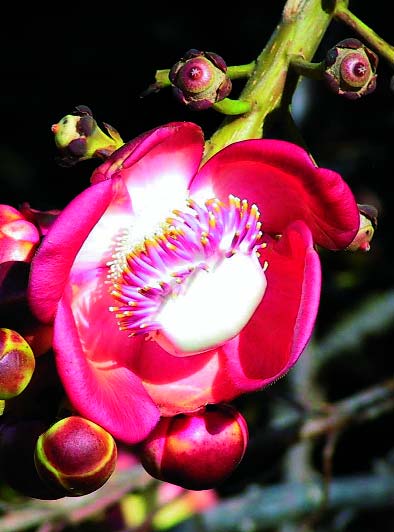The Garden’s GIS Lab
Jennifer Possley, GIS Lab Coordinator/Field Biologist
If you have been reading Garden Views for the past few years, or if you have ever been to Fairchild’s Research Center, then you may know that Fairchild has its very own “GIS Lab,” or Geographic Information Systems Laboratory.
The GIS Lab houses field biologists Sam Wright and myself, as well as much of the Research Center’s high-tech equipment. We have state-of-the-art GIS software and a large-format plotter for printing maps and posters. Field equipment includes a laser surveyor, electronic temperature and rain gauges, and a high-quality camera. We also have several GPS receivers, ranging from a hand-held unit with 45-ft accuracy, all the way to a large backpack unit with 3-ft accuracy.
Oops — like most tech-heads, I have already used two acronyms too many. If you are unfamiliar with these terms, please see the sideboxes for an explanation. Although, some readers may already know what “GIS”and “GPS” stand for. Those who work in public utilities or have done a search through their county property appraiser’s office may have used GIS. And anyone who is serious about fishing, lobstering, or boating may have used a hand-held GPS unit to aid in navigation back to that prime lobster hole or fishing spot.
I have always enjoyed the GPS and GIS aspects of my job. While there are downsides to everything (for example, sweating in the 95-degree heat while carrying a backpack and giant fiberglass pole; the horror of a dead battery when you are miles from the nearest store), there are definite bonuses. I’ve ridden on speedboats, canoes, helicopters, ATVs, and swamp buggies in order to map plants. I’ve crawled through dense brush to experience the quiet in areas where humans rarely go. Harrowing adventures I have shared with coworkers include getting stranded on an island at low tide, being chased by security personnel (who didn’t know what a GPS unit is), and being forced to use the GPS pole to vault over ditches. Working with a combination of GPS/GIS technology and field biology is a wonderful way to get to know the local flora. And with my GPS at my side (or as the case may be, strapped to me), I can never get lost.



